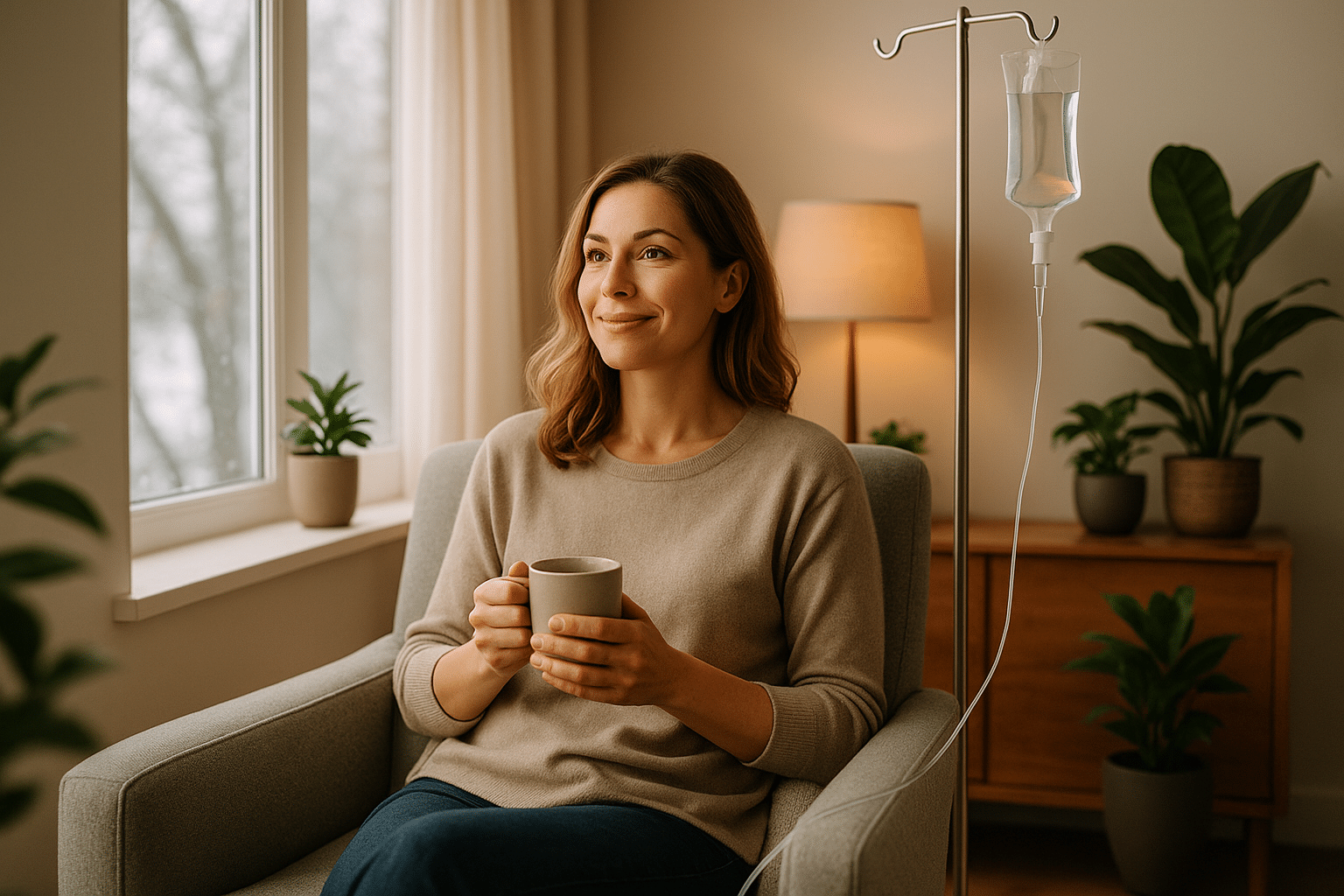People talk about depression as if it looks the same on everyone, but anyone who has watched a friend or partner struggle knows that is not true. Symptoms don’t fall into one neat box.
In the U.S., roughly 21 million adults experience major depression each year, yet women are diagnosed almost twice as often as men. That gap has puzzled researchers for decades. It starts to make sense, though, when you look at how depression symptoms express themselves differently, and how some signs are easier to recognize than others.
Women often show what clinicians call “internalizing” symptoms, while men tend to show “externalizing” ones. Understanding these differences matters because mistaking depression for “just life” delays depression treatment, especially for men who rarely describe emotional pain directly.
Why Gender Matters When We Talk About Depression
Women report depression at higher rates across nearly every national dataset. One large analysis that pooled data from more than 1.7 million people found the gap appears in early adolescence and never fully closes.
But another line of research complicates that picture. When studies add irritability, anger, substance use, or risk-taking to the symptom list, the things men often experience, men’s depression rates climb closer to those of women.
This shift shows how symptoms influence diagnosis. The traditional criteria capture sadness, guilt, and hopelessness well. They do not capture the man who snaps easily, drinks more at night, or shuts down emotionally after work.
A U.S. study using data from the National Comorbidity Survey put a fine point on this: When “male-typical” symptoms were included, men matched or exceeded women in depression prevalence. That doesn’t mean depression is more common in men; it means the standard screening questions miss how men express distress.
How Depression Commonly Shows Up in Women
Women’s symptoms tend to align with the public’s mental model of depression. Sadness is part of it, but not the whole picture.
Many women describe heavy emotional fatigue, spikes in worry, or a sense of failing at responsibilities that used to feel manageable. Some notice physical shifts before anything else, like tension headaches, stomach problems, sleep trouble, or low energy that doesn’t improve with rest.
Research on women of reproductive age shows an especially high burden when stressors stack up. Hormonal changes can make these shifts sharper. Postpartum depression is a clear example.
The CDC points out that about one in eight new mothers reports symptoms strong enough to interfere with daily life. These symptoms often include anxiety symptoms, intrusive worries about the baby, and moments of shame or overwhelm. They don’t always look dramatic from the outside, which is why friends sometimes mistake them for “new parent stress.”
Women tend to seek psychotherapy earlier, partly because their symptoms are easier to name and partly because expressing distress feels more socially acceptable. That willingness brings them into care sooner, which is one explanation for higher diagnosis rates.
How Depression Commonly Shows Up in Men (and Why It Gets Missed)
Men’s depression often hides in plain sight. Instead of sadness, a man might feel on edge or snap over minor frustrations. Instead of admitting fear or worry, he might throw himself into work, hobbies, or exercise to stay distracted. Some drink more. Others distance themselves emotionally from people they care about without fully understanding why.
Recognizing these patterns as depression symptoms can be tricky. In the U.S. National Comorbidity Survey, researchers noticed that men’s rates of depression rose sharply when irritability, aggression, and substance use were considered part of the picture. Put differently, men often feel depression internally but express it externally.
There’s also the reality of masculine norms. Many men grow up with messages about staying strong or handling problems independently. These expectations push feelings underground. By the time a man considers depression treatment, he may already be dealing with severe symptoms, substance misuse, or suicidal thoughts. And that fits national trends, as men die by suicide about three to four times more often than women.
The Cost of Misreading or Ignoring Gendered Symptoms
When symptoms don’t get recognized, they have space to intensify. A woman who experiences chronic worry may become completely overwhelmed by daily responsibilities. A man who turns to alcohol to take the edge off a numb or irritable mood may slip into dependence before realizing anything is wrong.
The consequences extend beyond personal discomfort. Depression interferes with work, relationships, and physical health. People lose interest in things that once grounded them. Conflicts become more frequent. Sleep becomes inconsistent. And when symptoms go untreated long enough, the risk of self-harm increases, especially in men, whose externalizing symptoms can escalate quickly.
This may sound heavy, but it’s an important reminder of why early recognition matters. Many people don’t think they’re “bad enough” to need help. They assume things will sort themselves out. This hesitation delays therapy, medication, or other supports that could steady things before a crisis.
Matching the Right Treatment to the Way Depression Shows Up
Once symptoms are recognized, the next step is finding the right kind of support. Good care starts with assessment. A clinician who understands gender patterns doesn’t only ask about sadness. They ask about anger, withdrawal, drinking, changes in work habits, and the physical symptoms that often appear alongside emotional distress.
From there, treatment becomes easier to match. Evidence shows that cognitive behavioral therapy helps people rework the thoughts and behaviors that keep depression active. It can help with rumination, avoidance, impulsive reactions, or emotional shutdown, depending on how the depression expresses itself. Other forms of therapy/psychotherapy support people dealing with trauma, chronic stress, or grief. Medication can stabilize sleep and energy when symptoms disrupt basic functioning.
Seeing Your Own Story in the Symptoms and Getting Support Sooner
Recognizing your own experience in these patterns can be surprisingly relieving. You might not feel “sad,” but you might notice yourself shutting down. You might not cry, but you might feel constantly overwhelmed. You might not feel anxious, yet the smallest decisions drain you. These are all forms of depression, too.
At Zeam, we support people across Sacramento, Roseville, and Folsom with personalized depression treatment, including therapy/psychotherapy, medication management, cognitive behavioral therapy, and advanced options for people who haven’t improved with earlier care.
When you’re ready, contact us so we can help you find support that fits the way your symptoms show up, not the way depression is “supposed” to look.
Key Takeaways (with citations)
1. Depression affects millions, but gender influences how symptoms appear and get diagnosed.
NIMH reports roughly 21 million U.S. adults experience major depression each year, and women are diagnosed nearly twice as often.
🔗 https://www.nimh.nih.gov/health/statistics/major-depression
2. When “male-typical” symptoms are included, men may experience depression at similar or higher rates.
Research shows that when irritability, anger, risk-taking, and substance use are counted as depression symptoms, men’s prevalence rises significantly—matching or exceeding women in some analyses.
🔗 https://pmc.ncbi.nlm.nih.gov/articles/PMC5532074/
🔗 https://jamanetwork.com/journals/jamapsychiatry/fullarticle/1733742
3. Men are less likely to recognize or seek help for depression, delaying treatment until symptoms become severe.
Studies show men often externalize distress—through irritability, withdrawal, or drinking—which leads to underdiagnosis and later intervention. Men also have significantly higher suicide rates.
🔗 https://www.cdc.gov/mmwr/volumes/69/wr/mm6919a2.htm
4. Women tend to experience more internalizing symptoms, making depression easier to identify and treat earlier.
Women frequently report sadness, anxiety, emotional fatigue, and physical symptoms such as sleep changes or low energy, which align more closely with traditional diagnostic criteria.
🔗 https://pmc.ncbi.nlm.nih.gov/articles/PMC5532074/




